Geographical Location and Overview
Epupa Falls is a stunning natural attraction situated along the border between Namibia and Angola, nestled in the northwestern region of Namibia’s Kunene Region. This remarkable waterfall is set within the scenic landscapes of the Khumib River, which cascades over rocky cliffs to create a spectacular spectacle of rushing water and mist. The surrounding area is characterized by rugged mountains, lush vegetation, and diverse wildlife, making it a unique destination for travelers seeking both natural beauty and cultural richness. Epupa Falls’s strategic location along the border highlights its significance as both a natural wonder and a vital part of the region’s ecological and cultural landscape.
Position within Namibia
Epupa Falls is a stunning natural feature located in the northwestern part of Namibia, situated along the Angolan border. It is part of the Kunene River, which forms the boundary between Namibia and Angola. The falls are renowned for their breathtaking cascading waters set amidst a rugged, scenic landscape that offers a unique glimpse into Namibia’s diverse environment. Positioned within the Kunene Region, Epupa Falls is easily accessible from the main road leading from Opuwo, the regional capital, making it a popular destination for tourists seeking to experience Namibia’s remarkable natural beauty.
Hydrological Features of the Epupa River
The Epupa River is situated along the border between Namibia and Angola in southern Africa, flowing through a rugged and scenic landscape. It is part of the Kunene River system and is renowned for its impressive waterfalls and diverse ecosystems. The river traverses remote regions characterized by arid savannah and rocky terrains, contributing to its unique hydrological features and visual appeal.
The hydrological features of the Epupa River include its seasonal flow that depends heavily on rainfall, resulting in varying water levels throughout the year. The river’s course features multiple cascades and waterfalls, with the most famous being the Epupa Falls, which plunge over 90 meters in height. These waterfalls are formed by basaltic rock formations that create a series of steps, leading to rapid water flow and spray. The river also supports a range of aquatic and terrestrial habitats, with pools and rapids serving as vital water sources for local flora and fauna. Its hydrological dynamics play a crucial role in shaping the surrounding landscape and sustaining the diverse ecosystems in the region near the Epupa Falls in Namibia.
Physical Characteristics of Epupa Waterfalls
Epupa Waterfalls in Namibia is a stunning natural wonder renowned for its dramatic and picturesque landscape. The waterfalls, formed by the Cunene River, cascade over rugged rocks creating a breathtaking display of nature’s power and beauty. Surrounded by lush vegetation and towering cliffs, the physical characteristics of Epupa Waterfalls exemplify the awe-inspiring geological formations typical of the region.
Waterfall Dimensions and Scale
Epupa Waterfalls in Namibia are renowned for their striking physical characteristics that showcase the power of nature. The waterfalls cascade over a series of basalt cliffs along the Kunene River, creating a dramatic and scenic spectacle. The impressive height and width contribute to their grandeur, making them a notable natural landmark in the region.
The water falls from a height of approximately 37 meters (121 feet), producing a continuous and vigorous flow. The width of the falls varies depending on seasonal rainfall, but during the rainy season, it can stretch up to 300 meters (984 feet), forming a wide ribbon of rushing water across the landscape. The scale of the waterfall, combined with the lush vegetation surrounding it, emphasizes its importance both aesthetically and ecologically.
Overall, the Epupa Waterfalls exemplify impressive waterbody dimensions and scale, creating a mesmerizing natural feature that attracts visitors from around the world. Their physical characteristics highlight the dynamic interplay between geology, hydrology, and climate in shaping Namibia’s stunning scenery.
Layout and Flow of the Waterfalls
Epupa Waterfalls in Namibia are renowned for their stunning natural beauty and unique geological features. The waterfalls are situated along the Cunene River, forming a dramatic boundary between the Kunene Region of Namibia and Angola. Their physical characteristics include a series of cascading flows over rugged rocks, creating a mesmerizing spectacle that draws visitors from around the world.
- The falls feature multiple tiers that vary in height, with some sections dropping over 37 meters (121 feet).
- The water flows over a rugged basaltic terrain, adding to the textured appearance of the waterfalls.
- The width of the falls can stretch up to 300 meters (984 feet) during the rainy season, showcasing a wide curtain of water.
- The river’s flow is heavily influenced by seasonal rains, resulting in a powerful, voluminous discharge during wet months and a more subdued flow during dry periods.
- The surrounding landscape is characterized by lush vegetation and rocky outcrops that enhance the waterfall’s scenic appeal.
The layout of the Epupa Waterfalls is characterized by a series of cascades that follow the course of the Cunene River. The water flows over a series of rocky ledges, creating multiple drop points and pools below. The flow pattern varies with the seasons, often forming intricate patterns of cascading water, which accentuate the natural contours of the landscape. During the high-flow season, the waterfalls are at their most impressive, with torrents of water plunging and tumbling over rocks, creating a thunderous sound that echoes through the canyon. The flow then diminishes in the dry season, revealing more of the riverbed and rocky formations, but the waterfalls maintain their stunning visual appeal year-round.
Ecological Significance and Biodiversity
Ecological significance and biodiversity are vital components of the natural world, playing a crucial role in maintaining the health and stability of ecosystems. At Epupa Waterfalls in Namibia, this importance is vividly illustrated by the rich variety of plant and animal species that thrive in the region. The area serves as a vital habitat, supporting diverse life forms and contributing to the overall ecological balance of the environment.
Flora of the Surrounding Area
Ecological Significance and Biodiversity of Epupa Waterfalls, Namibia
Epupa Waterfalls in Namibia are a vital ecological zone that supports a diverse array of flora and fauna, contributing significantly to the environmental health of the region. The lush riparian vegetation surrounding the waterfalls provides habitat for numerous bird species, insects, and aquatic life, fostering a rich biodiversity. The area’s unique climate and water availability create a specialized ecosystem that sustains various plant communities, including endemic and indigenous species that are adapted to the semi-arid environment. This biodiversity not only maintains local ecological stability but also plays a crucial role in supporting traditional livelihoods and promoting eco-tourism in the area.
The flora of the surrounding area includes characteristic trees such as the mighty Mopane, which thrives in the region’s warm climate, and the Acacia species, which are well-adapted to dry conditions. The lush riverbanks host papyrus and reeds that are essential for maintaining water quality and providing habitat for aquatic creatures. These plant species are integral to the ecological functioning of the waterfalls, acting as natural filters and stabilizers of the soil. Preserving this diverse plant life is crucial for maintaining the ecological integrity of Epupa Waterfalls, ensuring that it continues to support a wide range of species and sustain its vital ecological role in Namibia.
Fauna and Animal Habitats
Epupa Falls in Namibia is not only a stunning natural attraction but also a vital area for ecological diversity and wildlife habitats. The region supports a rich variety of flora and fauna, contributing significantly to the biodiversity of northern Namibia. The lush riverbanks and surrounding landscapes provide essential habitats for numerous animal species, many of which are endemic or threatened. The waterfalls’ ecosystem plays a critical role in maintaining ecological balance, supporting aquatic life, and sustaining plant communities that rely on the constant flow of water. Protecting this area is crucial for preserving its unique biodiversity and ensuring the survival of diverse species that depend on this habitat.
Conservation Status and Protected Areas
Epupa Falls in Namibia holds significant ecological value due to its diverse ecosystem that supports a wide range of plant and animal species. The area around the falls provides vital habitats for various wildlife, including birds, insects, and aquatic organisms, contributing to the region’s rich biodiversity. The lush riverine environments and surrounding savannahs are crucial for maintaining ecological balance and health.
Biodiversity in the Epupa Falls region is notable, with several endemic and migratory species relying on this habitat for survival. The presence of the Cunene River creates a unique ecological zone that sustains numerous species and supports critical breeding grounds, making it an important area for conservation efforts.
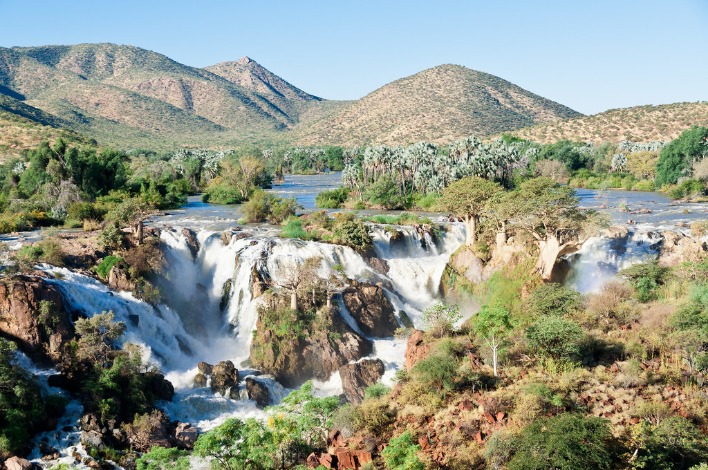
The conservation status of Epupa Falls is increasingly recognized as vital due to threats such as habitat degradation, water extraction, and potential infrastructure development. Several protected areas and reserves around the region aim to preserve its ecological integrity. These protected areas ensure the conservation of native flora and fauna, promote sustainable tourism, and maintain the natural beauty and ecological functions of the Epupa Falls landscape.
Tourism and Cultural Importance
Tourism plays a vital role in showcasing the rich cultural heritage and natural beauty of regions like Epupa Falls in Namibia. The site not only attracts travelers seeking breathtaking landscapes but also serves as a gateway to understanding the traditions and lifestyles of the local communities. Preserving this cultural diversity alongside its stunning scenery makes Epupa Falls a significant destination for both adventure and cultural appreciation.
Visitor Attractions and Activities
Epupa Falls in Namibia is a stunning natural wonder that holds significant cultural and tourism value. Situated along the Kunene River, it is renowned for its majestic waterfalls that cascade over rugged rocks, creating a breathtaking panorama that attracts visitors from around the world. The falls are not only a scenic marvel but also a vital part of the local Himba and Herero communities, reflecting their rich cultural heritage and traditional practices.
Tourists visiting Epupa Falls can enjoy a variety of attractions and activities, including guided waterfalls viewing, river cruises, and hikes through the surrounding rugged terrain. The area offers opportunities for bird watching, especially for species unique to the region, and exploring nearby traditional villages provides insight into local customs and lifestyles. Adventure enthusiasts can partake in activities such as kayaking and rafting on the Kunene River, making Epupa Falls a diverse destination for nature lovers and cultural explorers alike.
Local Communities and Cultural Heritage
Epupa Falls in Namibia is not only a breathtaking natural wonder but also a vital hub for tourism and cultural preservation. The stunning waterfalls attract visitors from around the world, contributing significantly to the local economy and fostering an appreciation for Namibia’s diverse environment. As tourists explore the lush landscapes and scenic vistas, they gain a deeper understanding of the region’s ecological significance and the importance of conserving such unique habitats.
For local communities, Epupa Falls holds profound cultural and spiritual value, particularly for the Himba and OvaHerero peoples who have lived in harmony with these landscapes for generations. The area is intertwined with their traditions, stories, and ways of life, making it a living heritage site. Promoting responsible tourism helps sustain these cultural practices and empowers local communities economically while safeguarding their identity.
Preserving the cultural heritage in the Epupa region is crucial for maintaining the social fabric and historical narrative of the tribes. Initiatives that involve local residents in tourism and conservation efforts foster respect and mutual benefit. Ultimately, Epupa Falls exemplifies how natural wonders can serve as a bridge between environmental stewardship and cultural continuity, enriching both visitors and the communities that call it home.
Eco-tourism Initiatives and Sustainability
Epupa Falls in Namibia is not only a stunning natural wonder but also a significant cultural and tourism destination that highlights the rich heritage of the Himba and Herero communities. The falls attract travelers from around the world who seek to experience Namibia’s unique landscapes and indigenous cultures, promoting local traditions and livelihoods. This influx of visitors underscores the importance of responsible tourism in preserving both the environment and cultural practices.
Eco-tourism initiatives in the Epupa area focus on minimizing environmental impact while providing authentic experiences for visitors. Community-led projects promote sustainable practices such as eco-friendly accommodations, waste management, and conservation efforts that protect the fragile ecosystems surrounding the falls. These initiatives ensure that tourism benefits local communities and encourages the conservation of Namibia’s natural and cultural heritage.
Sustainability remains a core principle in developing tourism around Epupa Falls. Efforts include supporting renewable energy sources, safeguarding water resources, and promoting environmentally conscious activities. By prioritizing sustainable development, the region aims to balance tourism growth with the preservation of its unique ecological and cultural landscapes, ensuring that Epupa Falls remains an enduring symbol of Namibia’s natural beauty and cultural richness for future generations.
Accessibility and Infrastructure
Accessibility and infrastructure play a vital role in enhancing the experience of visitors to natural wonders like Epupa Falls in Namibia. Well-developed pathways, viewing platforms, and transportation options ensure that a diverse range of travelers can enjoy this stunning location. Improving these facilities not only promotes tourism but also ensures safety and inclusivity for all visitors exploring the breathtaking landscapes of Epupa Falls.
Travel Routes and Transportation
Accessibility and Infrastructure around Epupa Falls in Namibia are vital for ensuring visitors can enjoy this natural wonder comfortably and safely. The region features a combination of well-maintained roads and infrastructure that connect the falls to surrounding towns and borders, making it accessible for travelers coming from Namibia and neighboring countries. The primary travel routes include the C46 road, which leads to the falls from the main highways, although some sections may require careful driving, especially during the rainy season.
Travel routes in the area are generally in good condition but can be challenging for vehicles not suited for rough terrain. Visitors often use 4×4 vehicles to navigate through less developed sections or to reach the more remote viewpoints around the falls. For those traveling from Windhoek or other major cities, a combination of paved roads and gravel tracks is typical, and some routes may be subject to seasonal closures or restrictions.
Transportation options include self-drive trips, guided tours, and local transport services. It is advisable for travelers to plan ahead and check road conditions, especially during adverse weather. The region is served by local lodges and campsites that provide transportation arrangements for guests. Overall, while infrastructure continues to improve, travelers should remain prepared for local conditions and prioritize safety when exploring Epupa Falls and its surrounding area.
Accommodation Options
Accessibility and infrastructure around Epupa Falls in Namibia are essential considerations for visitors seeking to experience this breathtaking natural wonder. The area offers a variety of accommodation options that cater to different preferences and needs, from basic camping sites to comfortable lodges. While the region’s infrastructure is developing, some remote parts may have limited facilities, so it is advisable for travelers to plan accordingly. Upgrading pathways and signage continues to improve accessibility for all visitors, including those with mobility challenges. Ensuring reliable transportation and clear directions enhances the overall experience while respecting the delicate environment and local communities surrounding Epupa Falls.
Visitor Facilities and Services
Epupa Falls in Namibia is renowned for its stunning natural beauty, but ensuring accessibility and comprehensive visitor facilities is essential for an enriching experience. The site offers various infrastructure features designed to accommodate visitors while protecting the delicate environment.
- Well-maintained paths and viewing platforms enable visitors to safely enjoy panoramic views of the waterfalls.
- Accessible routes are available for individuals with mobility challenges, including ramps and designated walkways.
- Visitor centers provide informational displays about the natural environment, local culture, and conservation efforts.
- Facilities such as clean restrooms, shaded picnic areas, and designated parking lots enhance comfort and convenience.
- Guided tours and boat excursions are available to offer a closer exploration of the falls and surrounding landscape.
- Local vendors and markets near the site provide opportunities for cultural exchange and purchasing souvenirs.
Environmental Challenges and Preservation Efforts
Epupa Falls in Namibia stands as a breathtaking natural wonder, nestled amidst the rugged landscapes of Kaokoland. However, like many pristine ecosystems worldwide, it faces numerous environmental challenges such as water resource management, deforestation, and climate change. Preservation efforts are crucial to maintain the area’s ecological integrity, protect its unique biodiversity, and ensure that future generations can continue to enjoy its stunning beauty. Understanding the balance between development and conservation is key to safeguarding this extraordinary site.
Impact of Climate Change
Epupa Falls in Namibia is a stunning natural wonder situated along the Kunene River, known for its impressive cascade and vibrant ecosystems. However, like many other natural sites worldwide, it faces significant environmental challenges, primarily driven by climate change and human activities. Rising temperatures and unpredictable rainfall patterns have led to fluctuations in water flow, threatening the delicate balance of the region’s ecosystem. The diminishing water levels can impact local flora and fauna, as well as the traditional livelihoods of communities dependent on the river.
Efforts to preserve Epupa Falls involve both local and international initiatives focused on sustainable water management and habitat conservation. Community-based programs aim to promote eco-tourism and responsible resource use, ensuring that tourism benefits local populations while minimizing environmental impact. Additionally, conservation organizations work to protect the river’s biodiversity and advocate for policies addressing climate change. Recognizing the impacts of climate change is crucial for implementing adaptive strategies that safeguard Epupa Falls’ natural beauty and ecological integrity for future generations.
Water Management and Dams
Epupa Falls, located on the Kunene River in Namibia, is a stunning natural attraction that highlights both the beauty of Namibia’s landscapes and the environmental challenges faced in the region. The falls are a vital part of the local ecosystem, supporting diverse flora and fauna, but they are also impacted by issues related to water management and dam construction. As the Kunene River is partially harnessed for hydroelectric projects and irrigation, concerns arise about the alteration of natural water flow, which can threaten the fragile ecosystems around the falls and downstream communities.
Environmental challenges in the area include water scarcity, habitat degradation, and the disruption of traditional livelihoods. Efforts to preserve the natural beauty and ecological integrity of Epupa Falls involve carefully balancing water resource utilization with conservation initiatives. Namibia has implemented water management strategies that emphasize sustainable use and the protection of aquatic habitats, including the regulation of dam operations to minimize negative impacts. Furthermore, local communities and conservation organizations are engaged in initiatives to monitor environmental health and promote eco-friendly tourism, ensuring the preservation of Epupa Falls for future generations.
Community-led Conservation Projects
Epupa Falls in Namibia faces significant environmental challenges due to deforestation, shifting water flows, and the impacts of climate change. These issues threaten the rich biodiversity of the region and the traditional livelihoods of local communities. Preservation efforts are crucial to safeguarding this natural wonder for future generations.
Community-led conservation projects play a vital role in protecting Epupa Falls. Local communities are actively involved in conservation initiatives that promote sustainable practices, such as responsible tourism and reforestation programs. These efforts not only help preserve the region’s unique ecosystems but also empower local residents, ensuring they have a vested interest in maintaining the area’s environmental health.

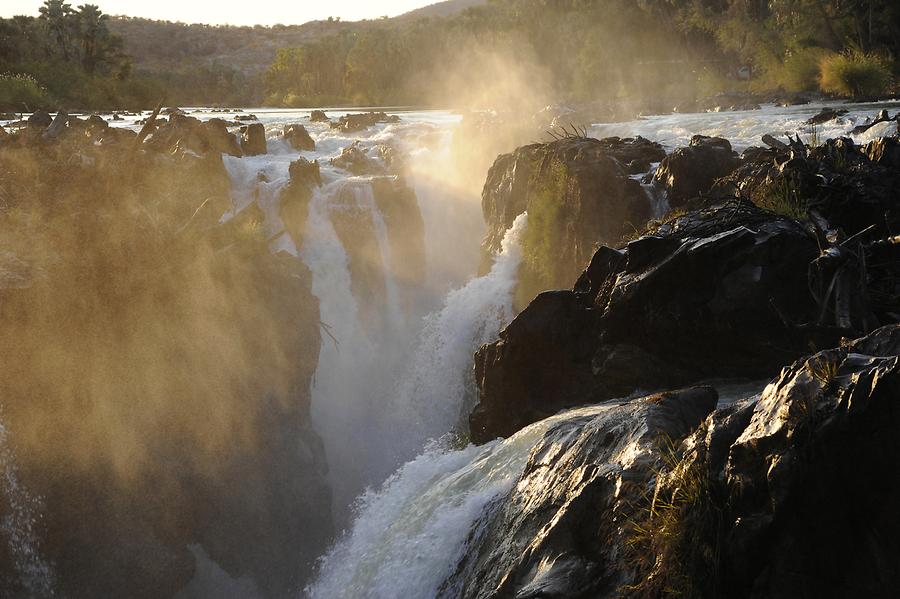
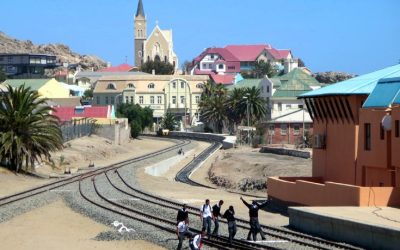
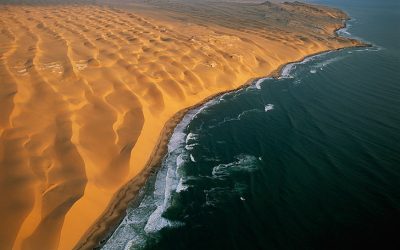
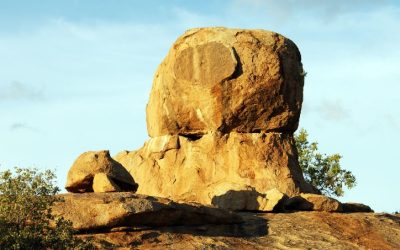
0 Comments